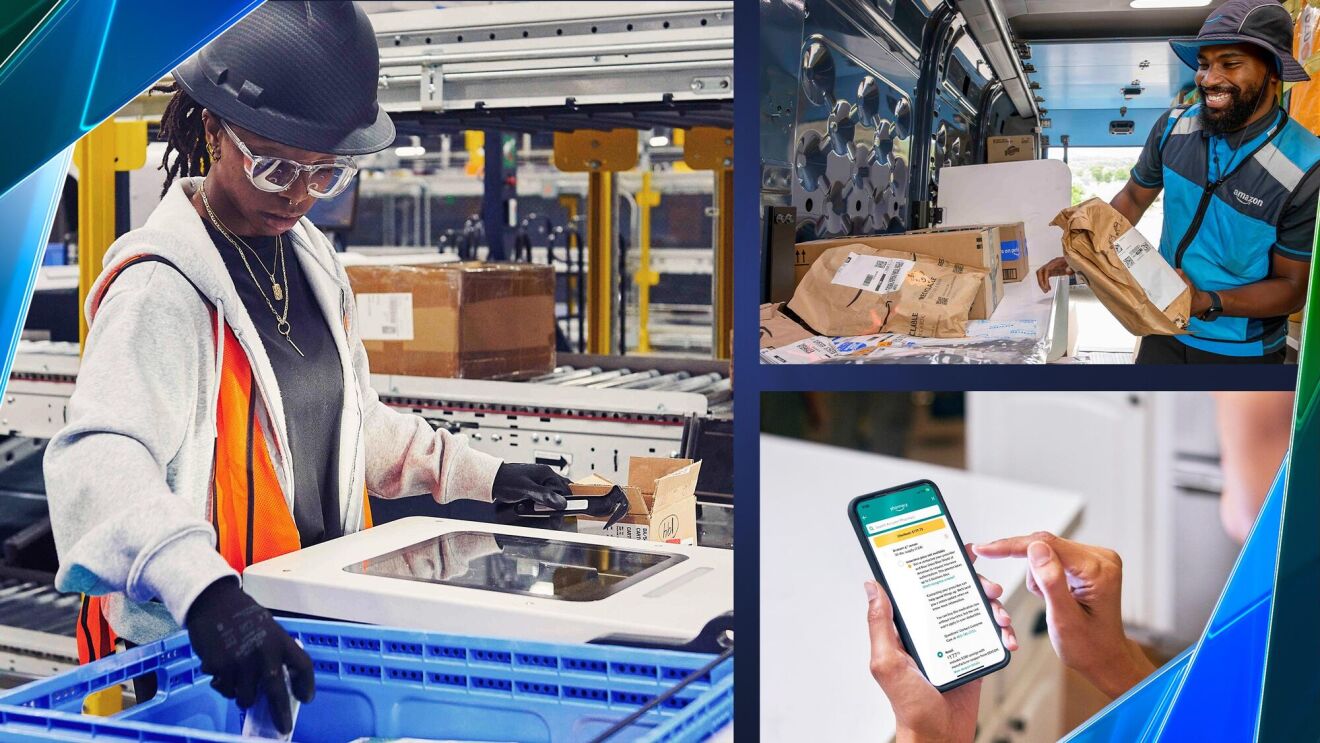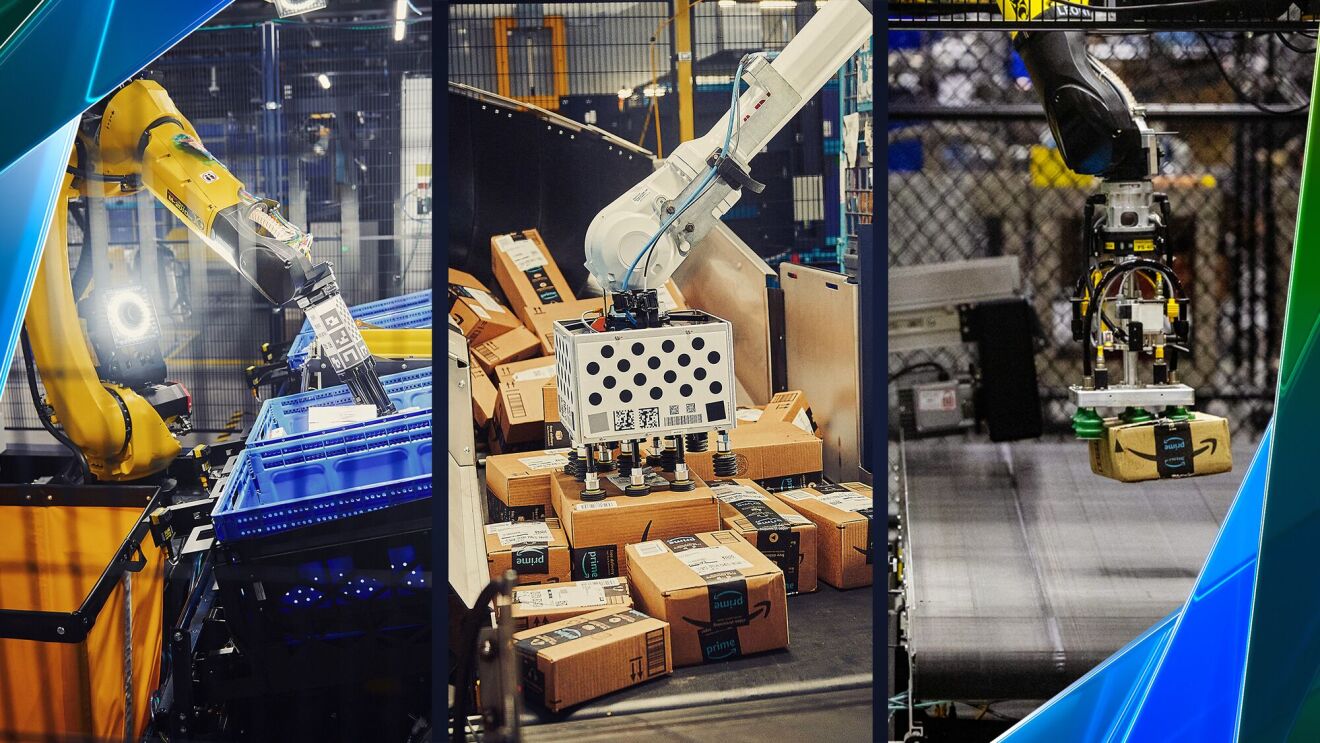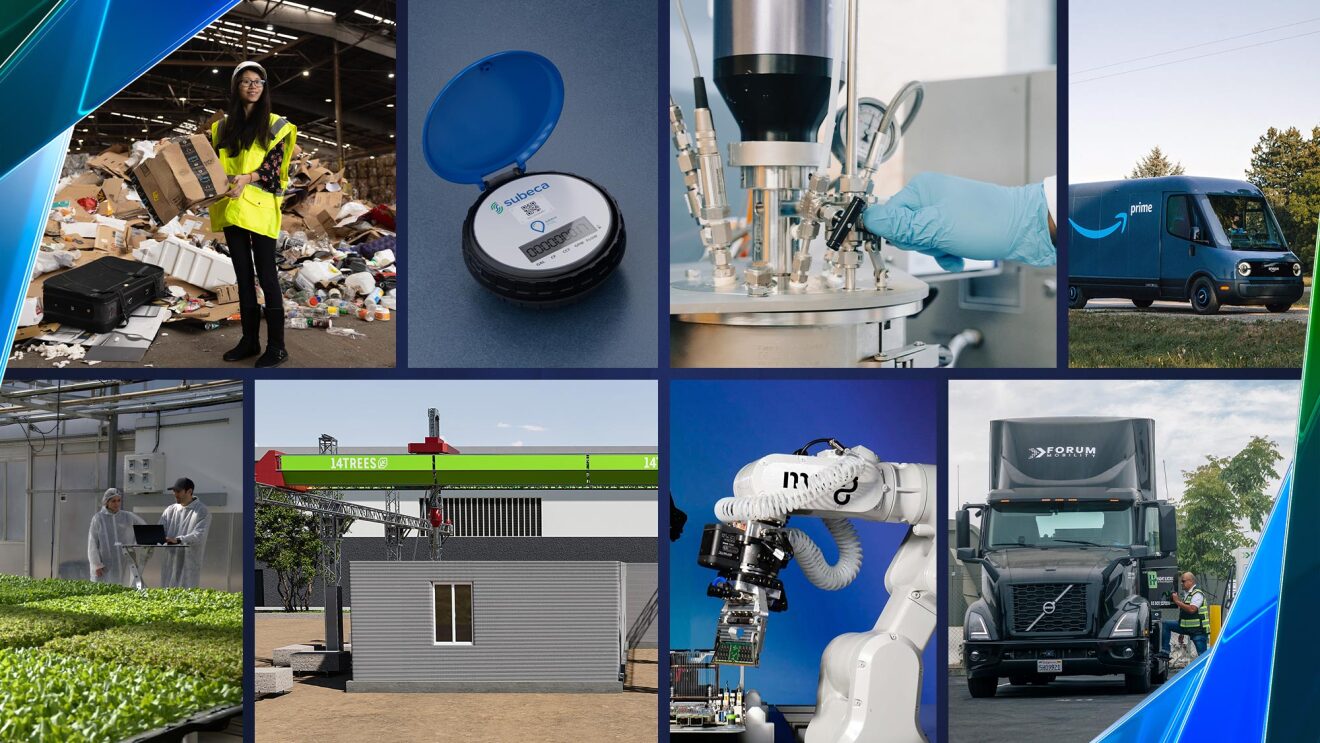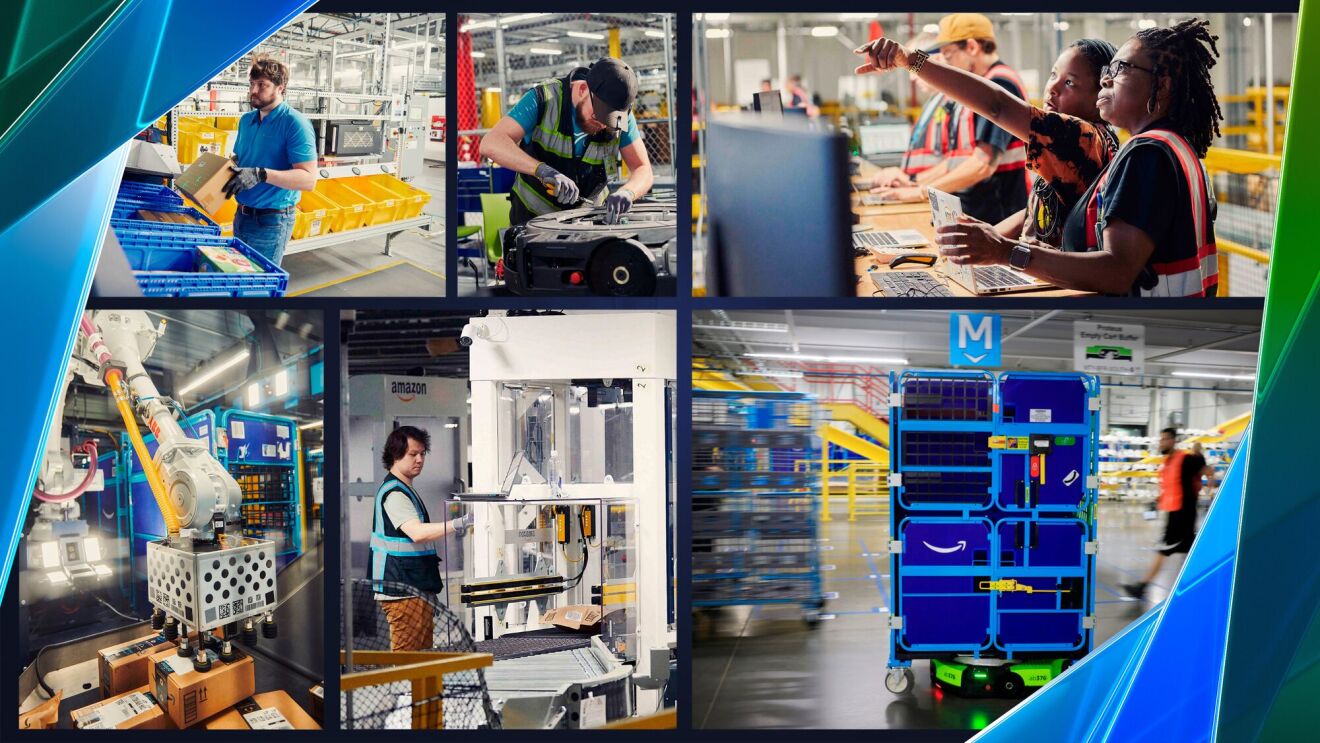Our highly automated Amazon fulfillment center in Euclid, Ohio is the first in the U.S. to replace plastic delivery packaging with paper packaging solutions that are curbside recyclable. Like most retailers, Amazon has traditionally used a mix of plastic and paper packaging to optimize for durability, weight, and size. However, recycling plastic packaging generally requires customers to head to a drop-off location, so our packaging engineers have been researching and experimenting for years to ensure we find the right solutions to deliver products to customers with paper.
By rebuilding existing machines to use paper instead of plastic, creating durable and flexible paper packaging, improving made-to-fit technology, and transitioning from plastic air pillows to paper filler, the team enabled the Euclid fulfillment center to transition fully to paper packaging. This work is part of a multiyear effort to convert U.S. fulfillment centers to paper, and these new paper solutions will provide the convenience of allowing many customers to recycle at home.
“This is a major milestone for our U.S. fulfillment centers, and I’m incredibly proud of the teams that developed new technologies to eliminate plastic packaging,” said Pat Lindner, VP of Mechatronics and Sustainable Packaging at Amazon. “This is just the beginning, as we continue to discover more ways to eliminate and reduce plastic packaging for our customers.”
Here's a look at the innovative solutions our packaging engineers created to eliminate plastic delivery packaging at the Euclid fulfillment center.
Transitioning plastic air pillows to paper filler
Customers want orders delivered in correctly sized, easily recyclable packaging that makes sure the product arrives in great condition and minimizes its impact on the environment. In the cases where an order does require additional packaging for product safety, we have historically used plastic air pillows. While it’s a common practice in retail shipments, these kinds of pillows require extra work for customers to pop them and then drop them off at a local recycling facility. By transitioning to paper filler made from 100% recycled content, customers can simply recycle them in their curbside recycling bin.
Redesigning machines to produce paper bags
We don’t just want to use curbside recyclable packaging; we also want to use as little packaging as possible to minimize our impact. Over the last several years, Amazon has significantly reduced packaging using machine learning to identify products that can be safely delivered in lighter, smaller packaging. These types of packaging are up to 90% lighter than similar-sized rigid corrugated boxes.

In order to create a solution that was lighter, smaller, and curbside recyclable, Amazon’s packaging engineers redesigned machines that were previously packaging items in non-padded plastic bags. The machines now use a built-in sensor to identify the correct size for non-padded paper packaging of products, including clothes, kitchen supplies, and sports equipment. A heat-sealing technology is then used to ensure items are securely closed. This process allows for a reduction in empty space and excess waste, while not compromising product safety. In addition to updating the machines, Amazon developed a paper which stretches, is more weather-resistant than regular paper, and has the ability to be heat-sealed. All elements of this packaging were then tested to ensure the package is curbside recyclable.
“We had machines that were creating durable, right-sized, light packaging, but it wasn’t curbside recyclable, so we took on a challenge and heavily invested in creating a new packaging that customers can easily recycle,” said Lindner. “We’re proud of this innovative work from our teams of scientists and engineers, and we look forward to testing this technology on a larger scale.”
Creating new machines to produce protective, made-to-fit corrugate packaging
Amazon also spent the past several years developing a new machine that creates on-demand, curbside-recyclable, made-to-fit packages for products that require more protection than a non-padded bag. This machine measures an order’s dimensions and then creates a right-sized, protective package using a type of corrugate that is flexible and lighter than the typical box. This new technology has the largest custom-package size range of any other automated machine at Amazon, with the ability to create made-to-fit packaging for roughly half of Amazon’s packages shipped. The made-to-fit technology, paired with the lighter corrugate, allows these machines to reduce waste by minimizing the amount of material we ship per package, and additionally, provides the customer with an easy-to-open experience.

Today’s announcement is just one part of Amazon’s ongoing investment in reducing packaging and increasing curbside recyclability across all of our operations, while ensuring products get to customers undamaged. This includes the kinds of innovations described above, and also programs that we’ve invested in for many years—like our work to ship items without any additional packaging.
In 2022, 11% of all packages shipped globally were without added Amazon delivery packaging through our Ships in Product Packaging program, where we test and certify products to ensure they can safely ship in their own packaging. Since 2015, we’ve reduced per-shipment packaging weight by 41%, on average, representing more than 2.1 million tons of packaging materials avoided, the equivalent of more than 173 Space Needles. And in 2022 alone, we decreased single-use plastic delivery packaging by 11.6% across our global operations by expanding paper-based packaging, and continuing to use lighter and more-flexible packaging.
Amazon’s teams are working every day to improve our packaging and transform our transportation network to make it more sustainable, including electrifying our delivery fleet and sourcing alternatives to fossil fuels. We look forward to continuing to share our progress, and you can read our latest Sustainability Report to learn more.











